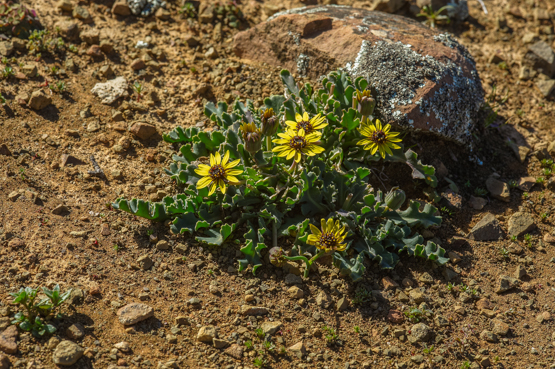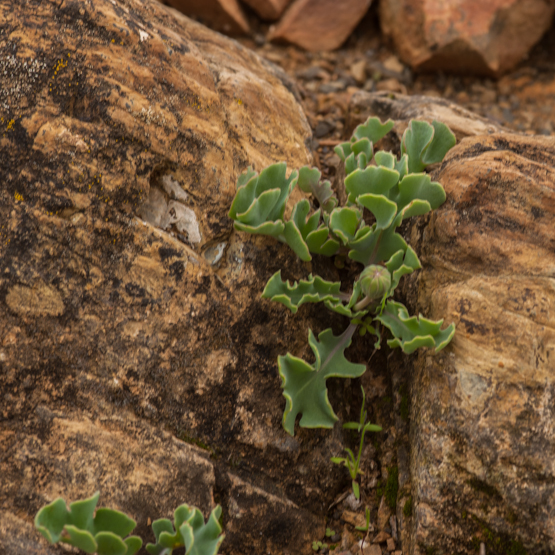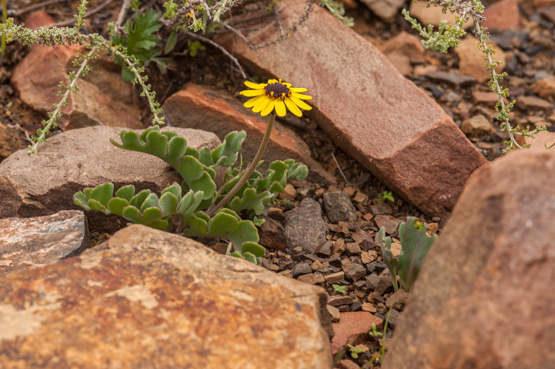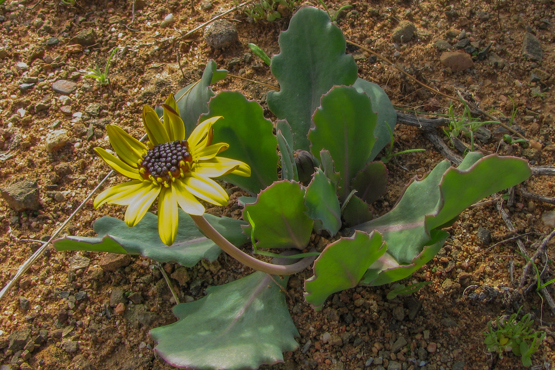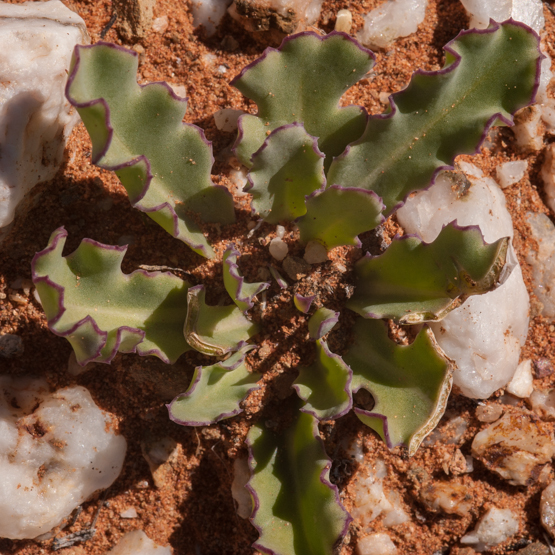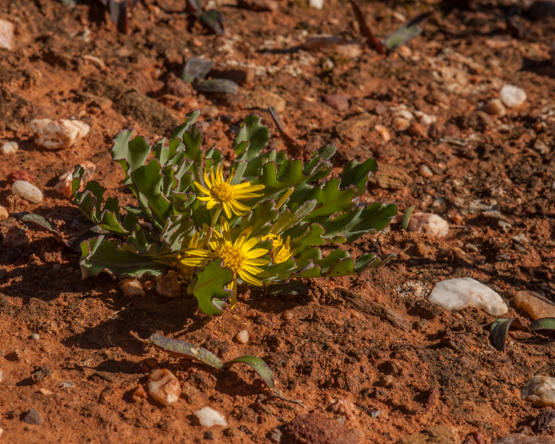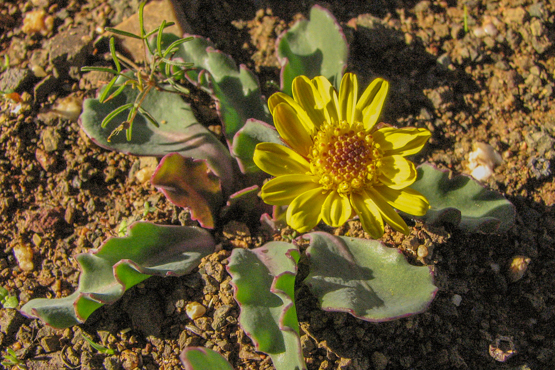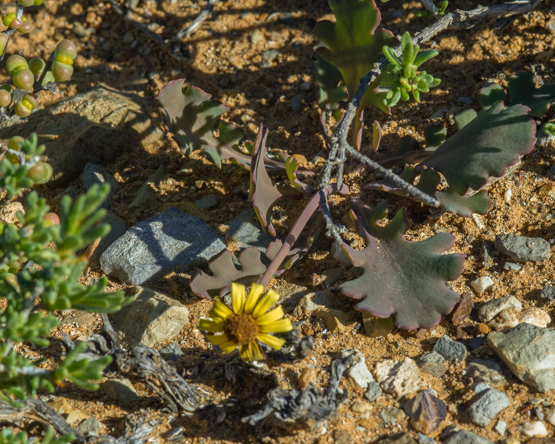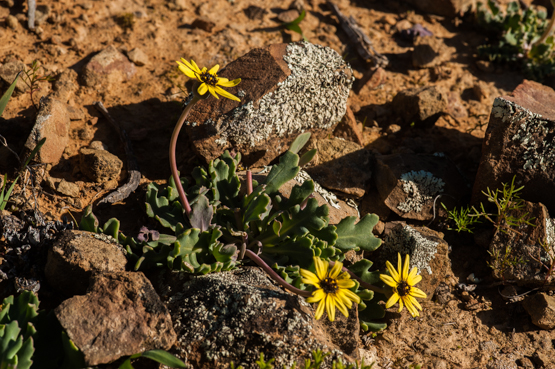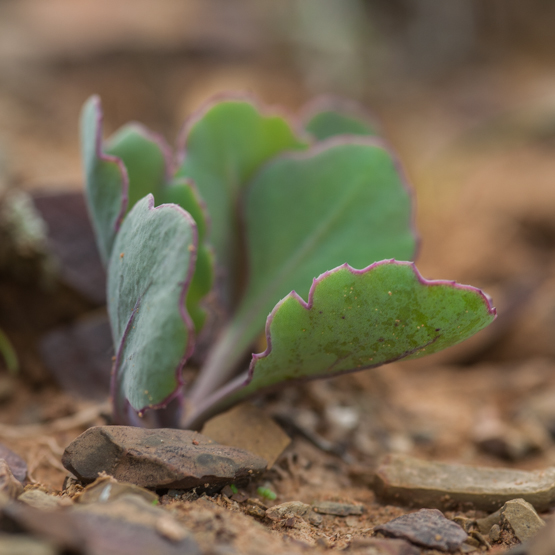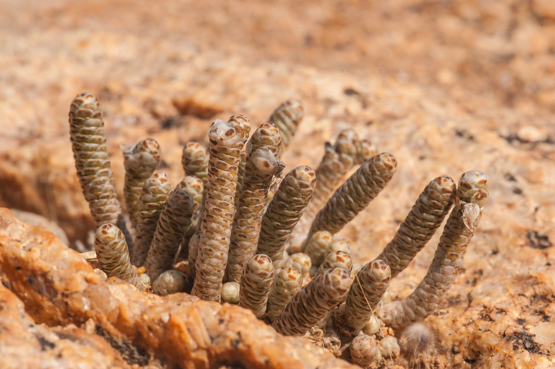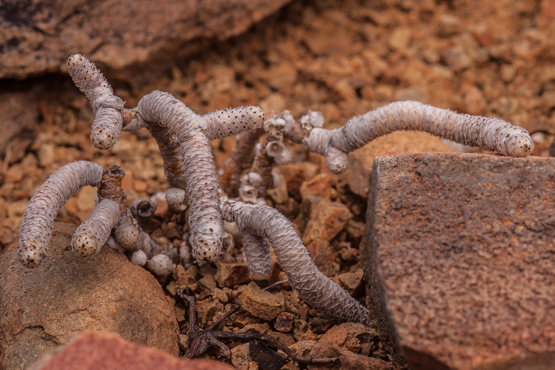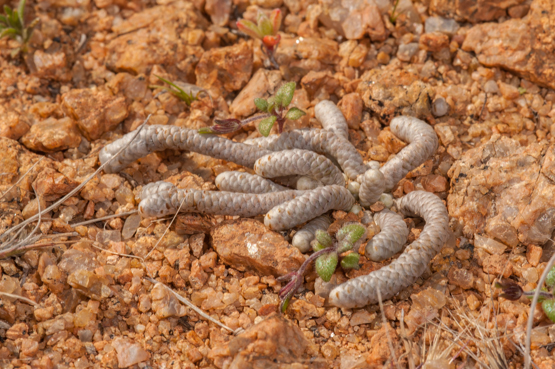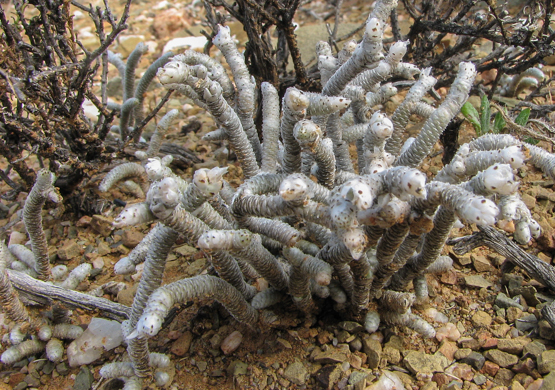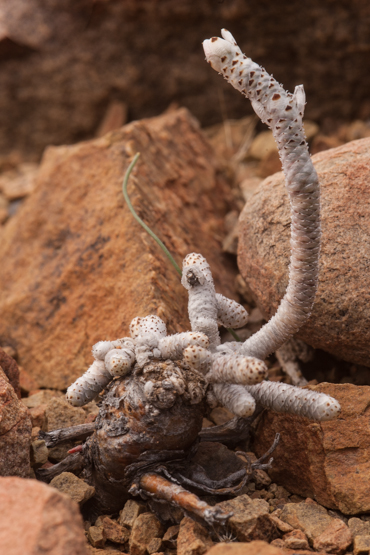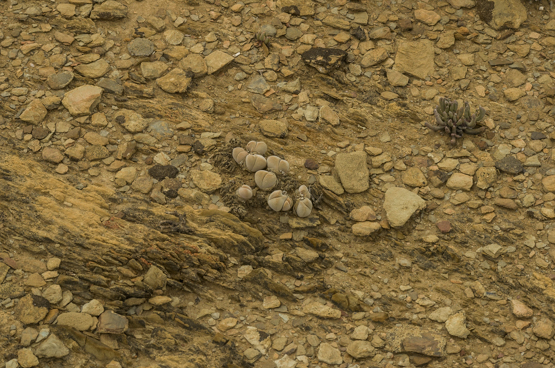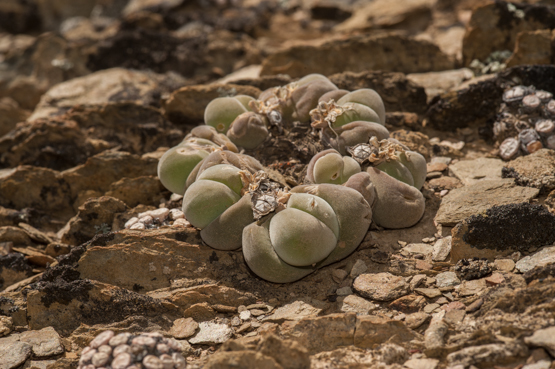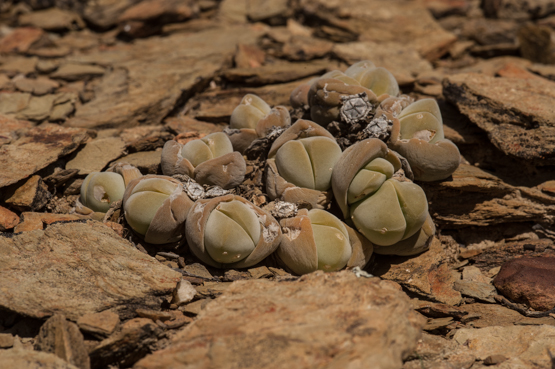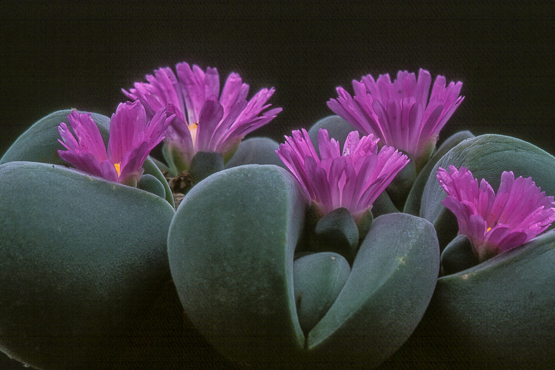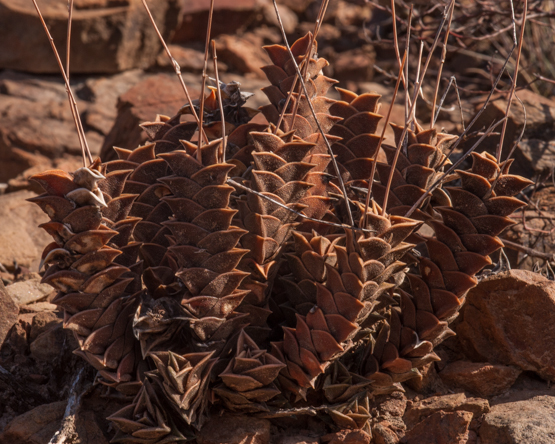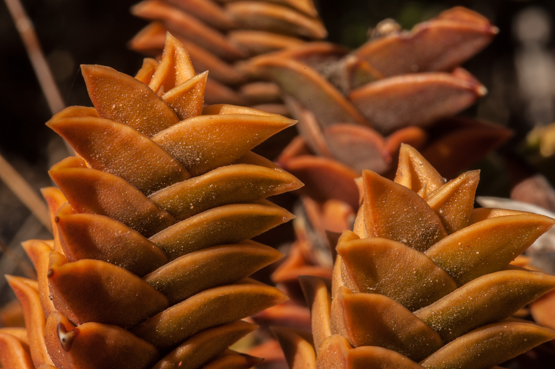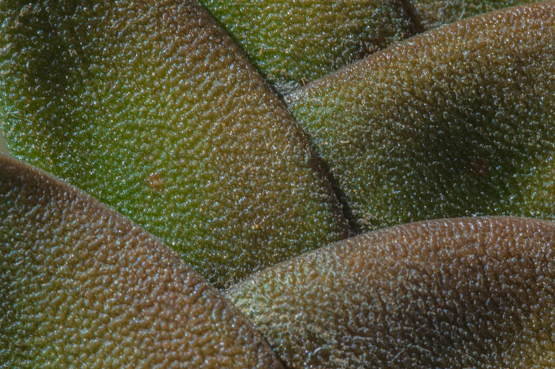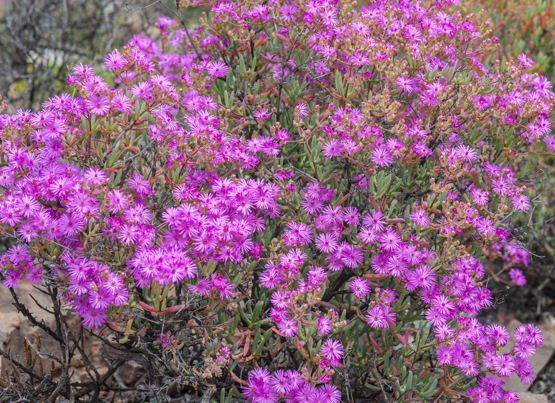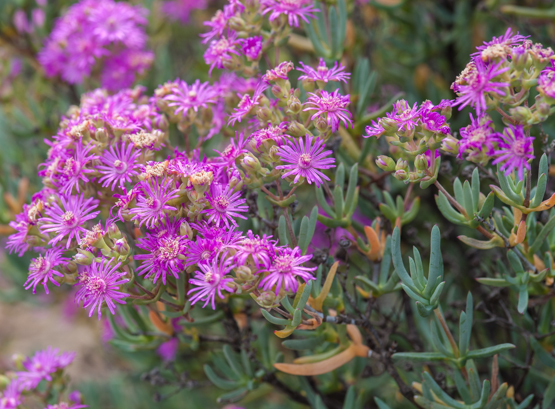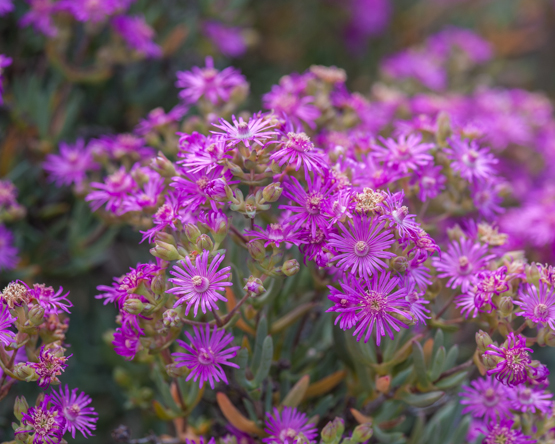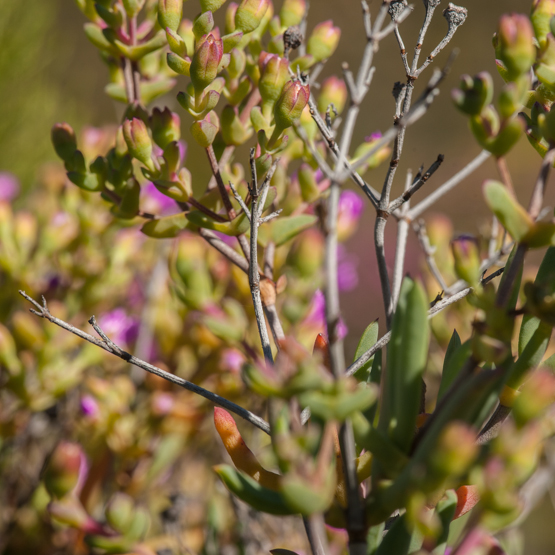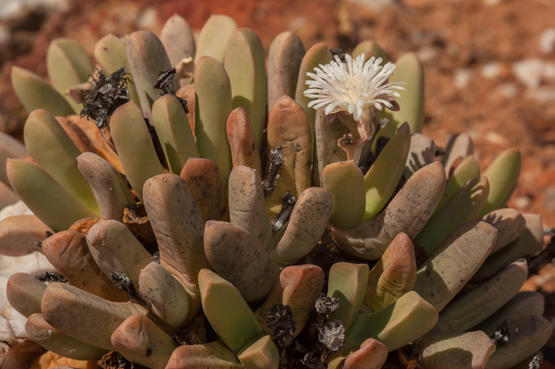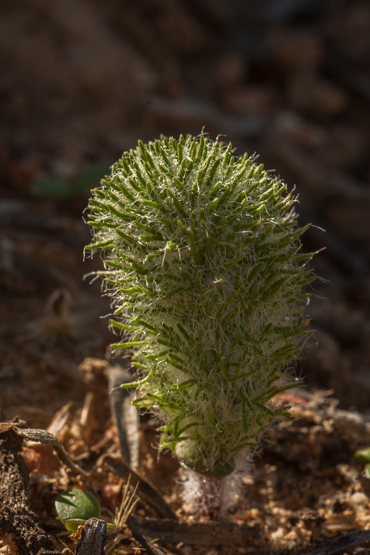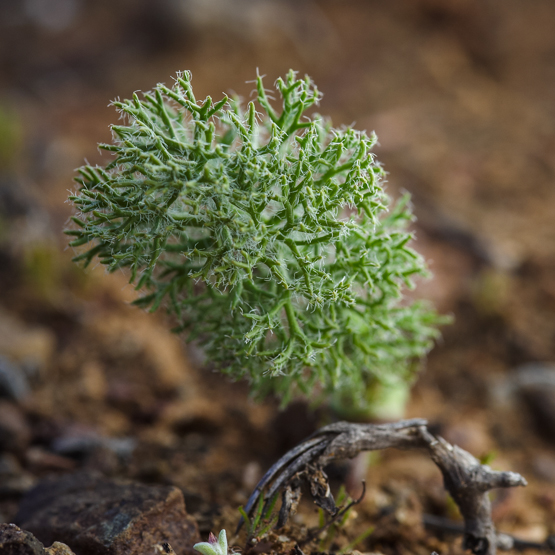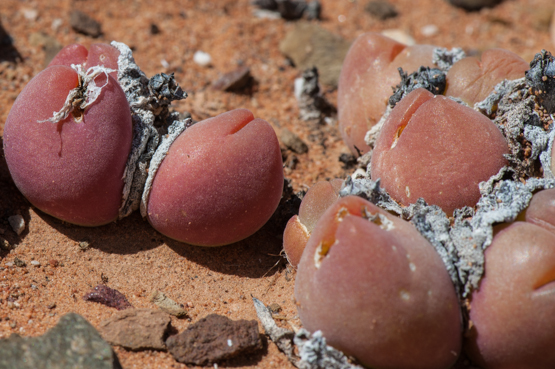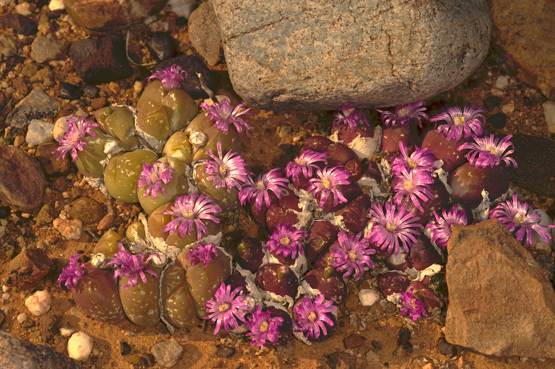Author: Frans Noltee
Othonna auriculifolia 2
Othonna auriculifolia 1
Tuberous Othonnas are not very common in cultivation, mainly due I suppose because they are difficult to propagate. Taking cuttings is not really an option and seeds are hard to get and to germinate. It can hardly be caused by lack of appeal, as the following pictures will hopefully show you.
O. auriculifolia is quite widespread in nature, from the Bokkeveld Mountains to Uniondale on stony, clayey or sandy slopes and flats.
The flowerheads are about 2 cm across and appear from April to September. The ray florets are always bright yellow, but the central ones may also be a darker yellow or even a very dark, almost black, purple.
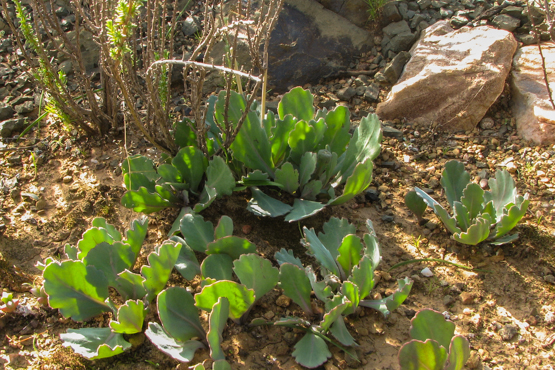
More pictures to follow.
Avonia albissima
Even if the name implies otherwise, this is far from the whitest Avonia, as many plants of this species look brownish, rather than bright white (see first picture).
Whatever the colouration, it is a nice little plant which does not get taller than about 4 cm. Sometimes a little caudex is visible (see bottom picture)
The species occurs in Namibia and northwestern South Africa.
Gibbaeum dispar
In cultivation this species is rather common, as it is one of the easier Gibbaeums to grow and flower (see picture at bottom).
In the wild it is only found on a few very dry shaly ridges near Vanwyksdorp. According to Nel’s Gibbaeum Handbook, it is the only Gibbaeum which does not grow together with any other species of the genus.
The plants look a bit like G. album, but they are darker and softer. The flowers appear in April.
Haworthia viscosa
Although rather variable, this species is easy to identify (H. nigra is the only other Haworthia in which the leaves are arranged in three ranks). The species is tall as Haworthias go: up to 30 cm. It is widely distributed from halfway between Laingsburg and Sutherland, throughout the central, eastern and southern Karoo and the Little Karoo, with an outlying habitat near Graaff-Reinet. In shade the plants are green, but one often encounters them in very arid places in full sun, where they usually become brownish, reddish or orange.
Ruschia pungens
Shrubby Mesembs are often difficult to identify with the help of literature. Once a more knowledgeable person has given you the right name, it usually seems hard to believe that you didn’t get there under your own steam.
This species is a case in point. Especially older plants are easily recognized: robust shrubs of up to a meter tall with the old inflorescences remaining on them for several years. These remains are hard and spiny, giving rising to the specific epithet.
R. pungens is a widespread species, occuring from Montagu to the Eastern Cape.
Nelia pillansii
Eriospermum paradoxum
The family Eriospermaceae contains only one genus, with about a hundred species. The name Eriospermum means woolly seed, referring to the long hairs that cover the seeds. The plants have underground tubers, which in most species produce only one leaf per year. In the case of E. paradoxum the leaf is about 7×6 mm, bearing a peculiar and distinctive tree shaped outgrowth (enation), which may be up to 11 cm long and 3 cm wide. The leafing period is May to October, slightly overlapping the flowering time (April/May).
E. paradoxum has a wide distribution in the winter rainfall area, from the Richtersveld in the north-west to near Grahamstown in the Eastern Cape, on sandy or clayey soils.
